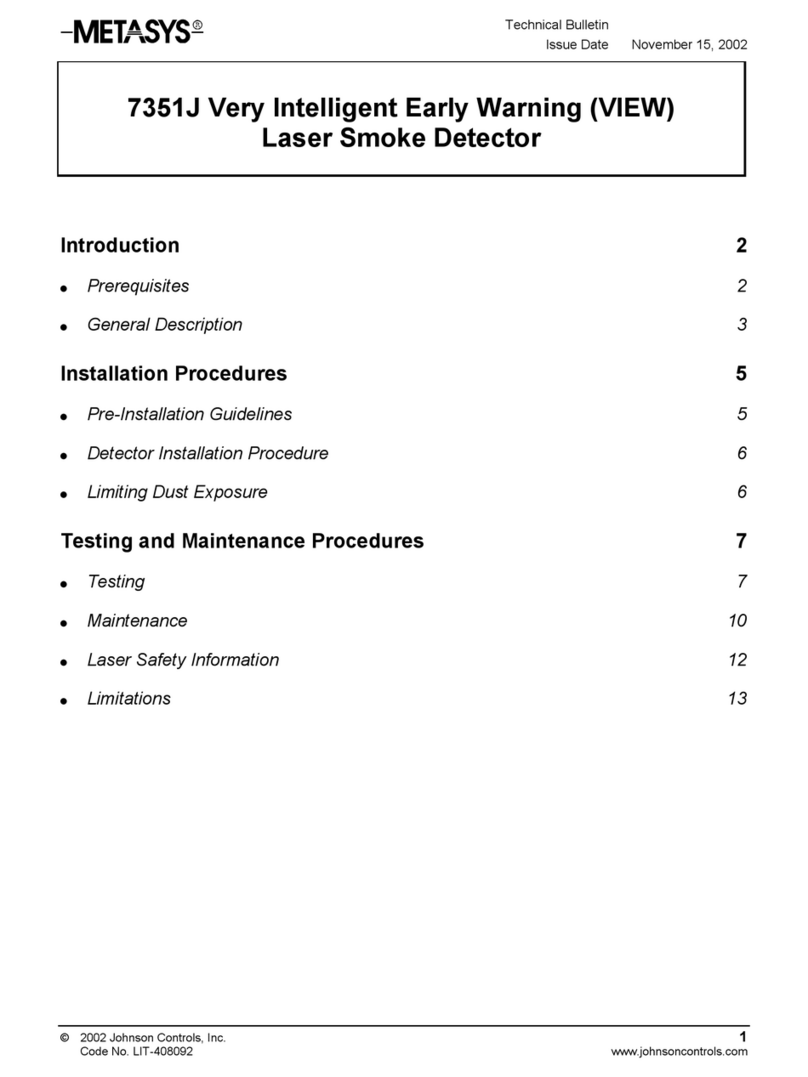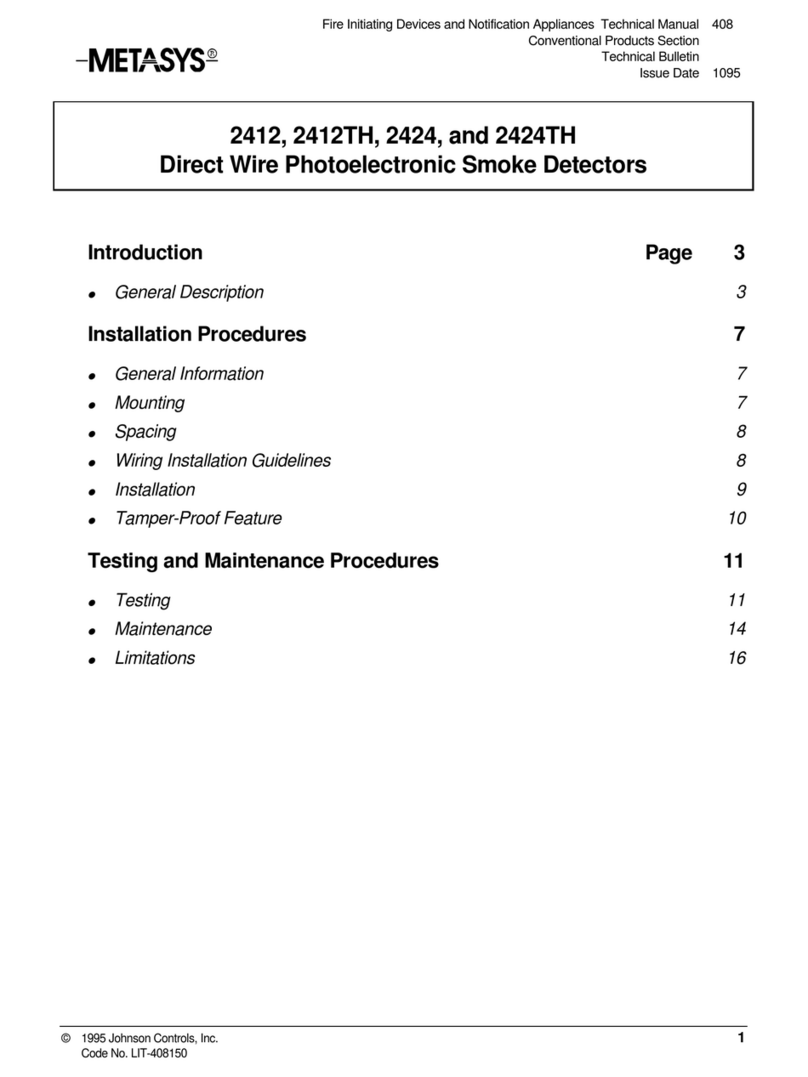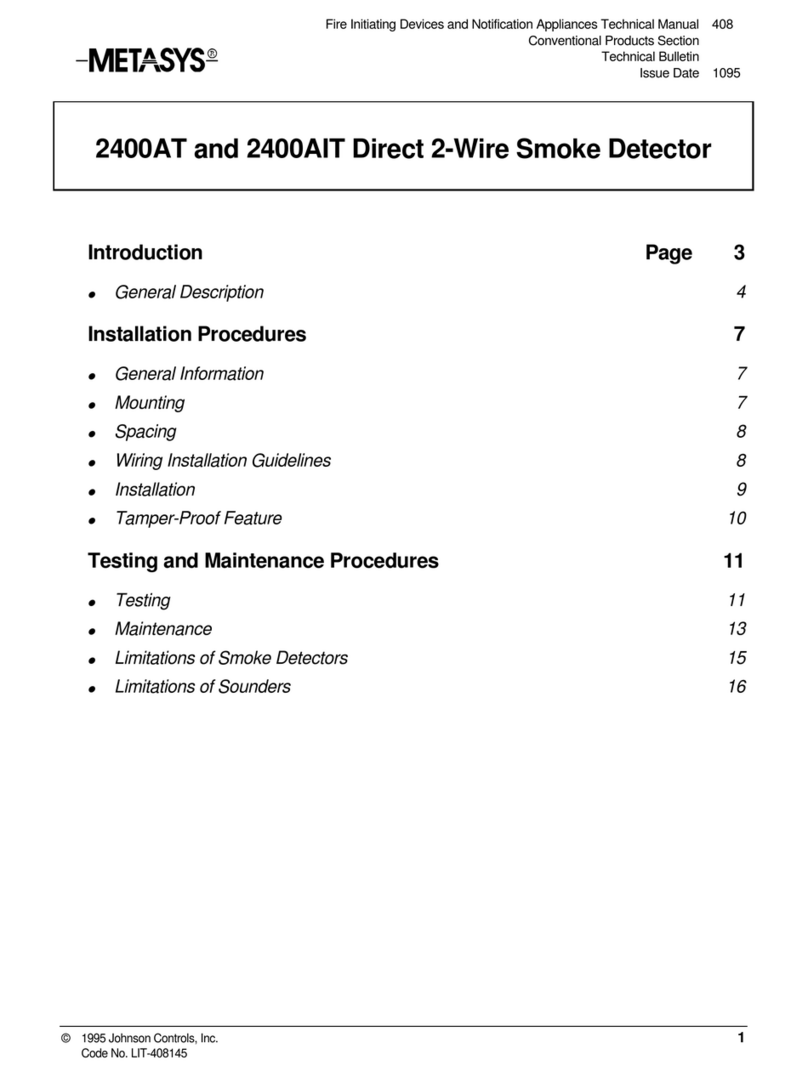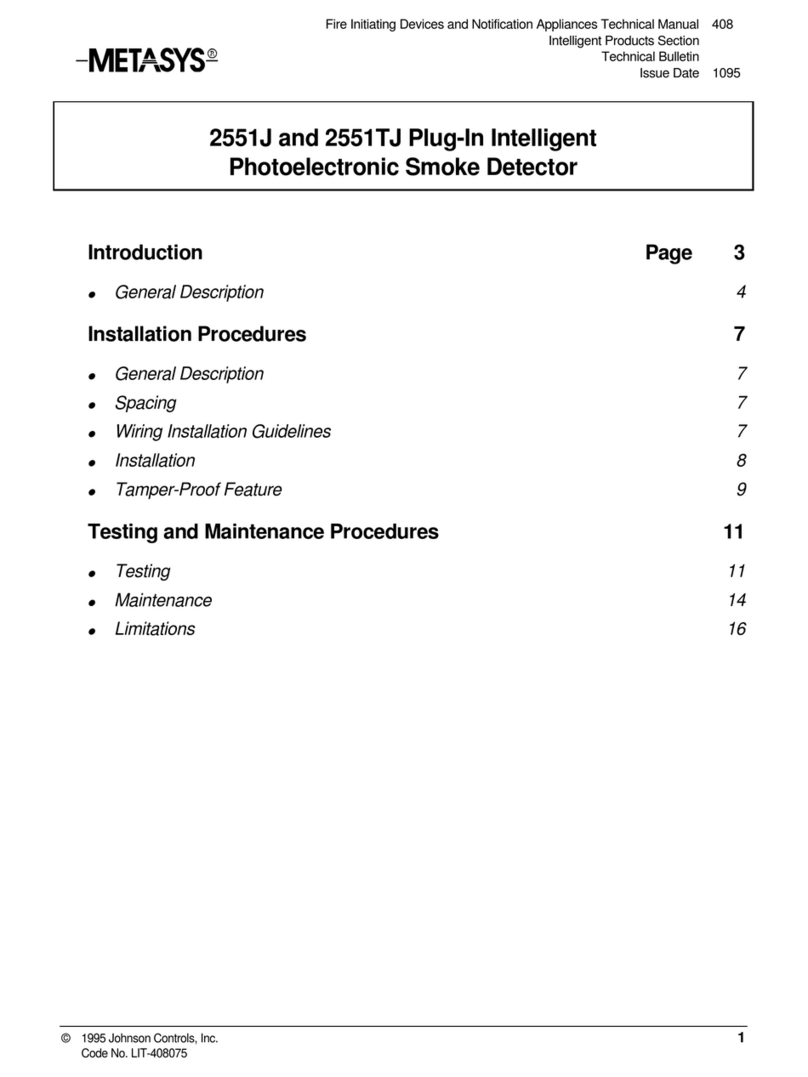
4 Conventional Products—1400, 1412, and 1424 Direct Wire Ionization Smoke Detectors
Table 1: 1400 Specifications Summary
Diameter 5.5 in. (140 mm)
Height 3.12 in. (80 mm)
Weight 0.7 lb (310 gm)
Operating Temperature 32 F to 120oF (0 to +49oC)
Latching Alarm Reset by momentary power interruption
Operating Humidity 10% to 93% RH, Non-condensing
Electrical Ratings
System Voltage 12/24 VDC
Maximum Ripple Voltage 4 volts peak to peak
Startup Capacitance 0.02 uF Maximum
Min/Max Operating Voltage Model 1400 (8.5 to 35 VDC)
Model 1412 (11.3 to 17.3 VDC)
Model 1424 (20-29 VDC)
Standby Current 8.5 VDC Minimum
35 VDC Minimum
100 uA Maximum
Alarm Ratings 4.2 VDC Minimum at 10 mA
6.6 VDC Minimum at 100 mA
Alarm current must be limited to 100 mA maximum by the control panel. If used, the
RA400Z Remote Annunciator operates within the specified detector alarm currents.
Reset Voltage 2.5 VDC Minimum
Reset Time 0.3 seconds Maximum
Startup Time 35 seconds Maximum
Maximum Air Velocity 1,200 ft/min
The 1412 and 1424 dual-chamber ionization smoke detectors utilize
state-of-the-art, unipolar sensing chambers. These detectors are designed
to provide open area protection, and to be used with UL Listed 4-wire
control panels. The 1412, for 12 volt panels, operates at 12 VDC, and the
1424, for 24 volt panels, operates at 24 VDC. The detectors’ operation
and sensitivity can be tested in place. These detectors are listed to UL 268
and are latching type system detectors.
Each detector includes an LED that provides a local visual indication of
the detector’s status. The LED blinks every ten seconds as an indication
that power is applied to the detector and lights continuously in alarm.
These detectors also have the latching alarm feature. The alarm can be
reset only by a momentary power interruption.
Each detector contains one Form-A (SPST-NO) contact for connection to
the alarm-initiating circuit, and one Form-C (SPDT-NO/NC) set of
auxiliary contacts. Both sets of contacts are activated when the detector is
in alarm. Supervision of detector power is accomplished by installing a
power supervisory End-of-Line (EOL) relay module (A77-716 series) at
the end of the detector power circuit.
1412 and 1424
Detectors































